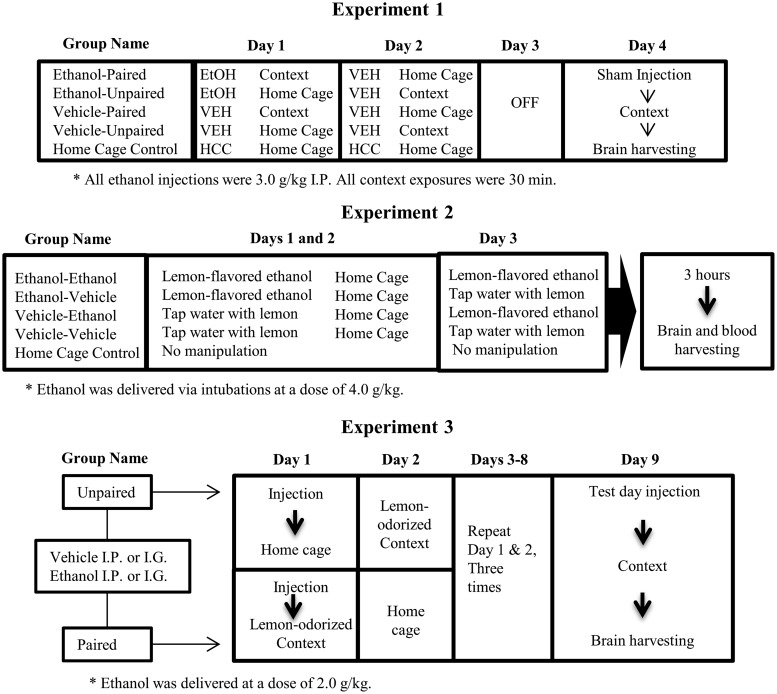Figure 1.
Methods for the analysis of acute and ethanol-mediated, conditioned immune responses, in Experiments 1, 2, and 3 (upper, middle, and lower sections, respectively). On day 1 of Experiment 1, the rats were injected intraperitoneally (IP) with ethanol or vehicle and then were returned to home cage or placed into a novel context (unpaired and paired group, respectively). On day 2, the animals received an injection of saline and were placed either back in home cage (paired group) or into the context odorized with lemon (unpaired group). On day 4 (test), all animals were given a sham injection before being placed in context for 30 min, after which brains were immediately harvested. In Experiment 2, the rats were given, during days 1 and 2, intragastric (i.g.) administration of lemon-flavored ethanol or vehicle (tap water flavored with a non-alcoholic lemon extract). On day 3 (test), the rats were given intubations of lemon-flavored water or ethanol (flavored with lemon). All rats were sacrificed 3 h after the final exposure, and brain tissue was harvested and blood samples were collected. In Experiment 3, the animals were given four paired or unpaired exposures to lemon odor and the post-absorptive effects of ethanol (2.0 g/kg; i.p. or i.g.) or vehicle. During test day, all animals were given 0.5 g/kg ethanol followed by a 30 min exposure to lemon odor, after which brains were immediately harvested. Experiments 1 and 2 also included unmanipulated, home cage controls (HCC).

